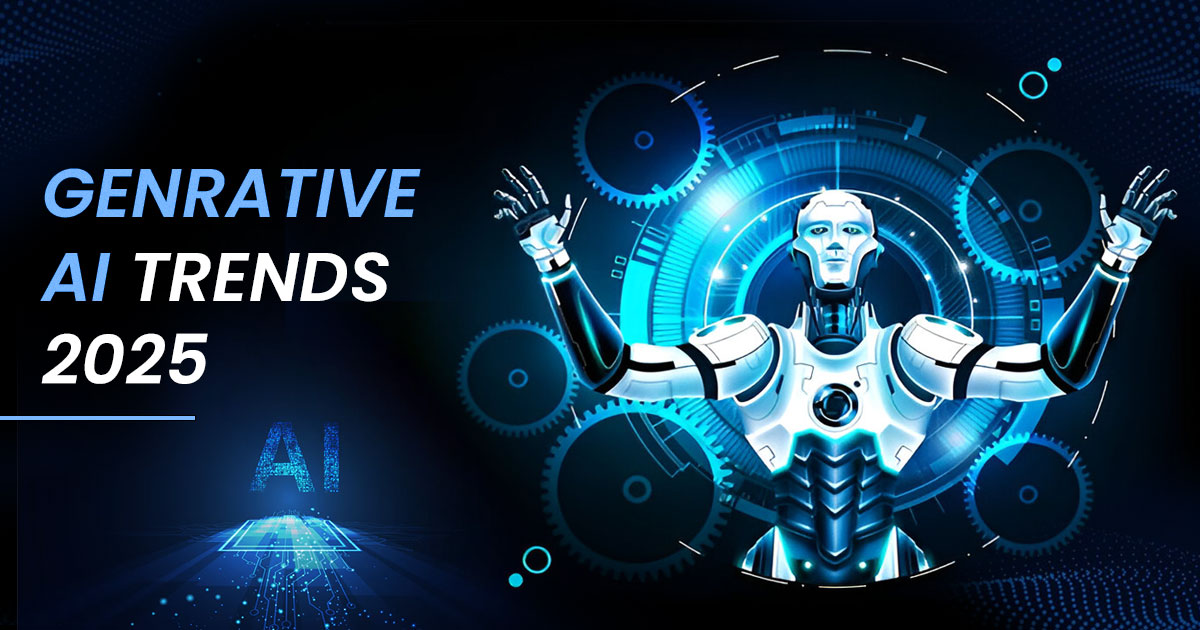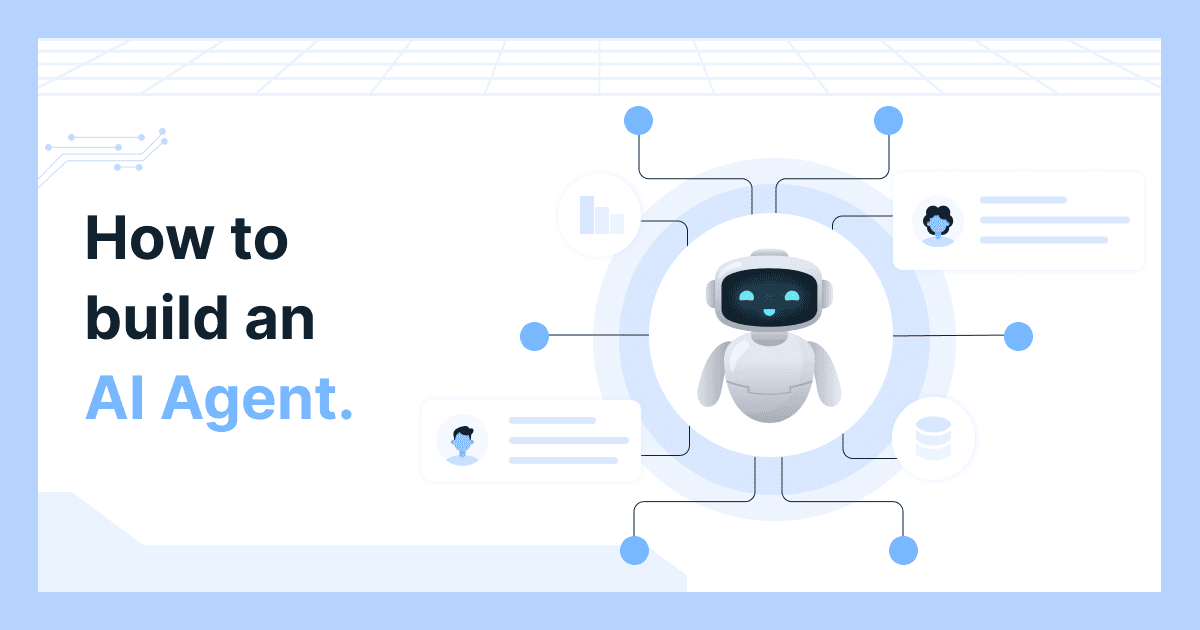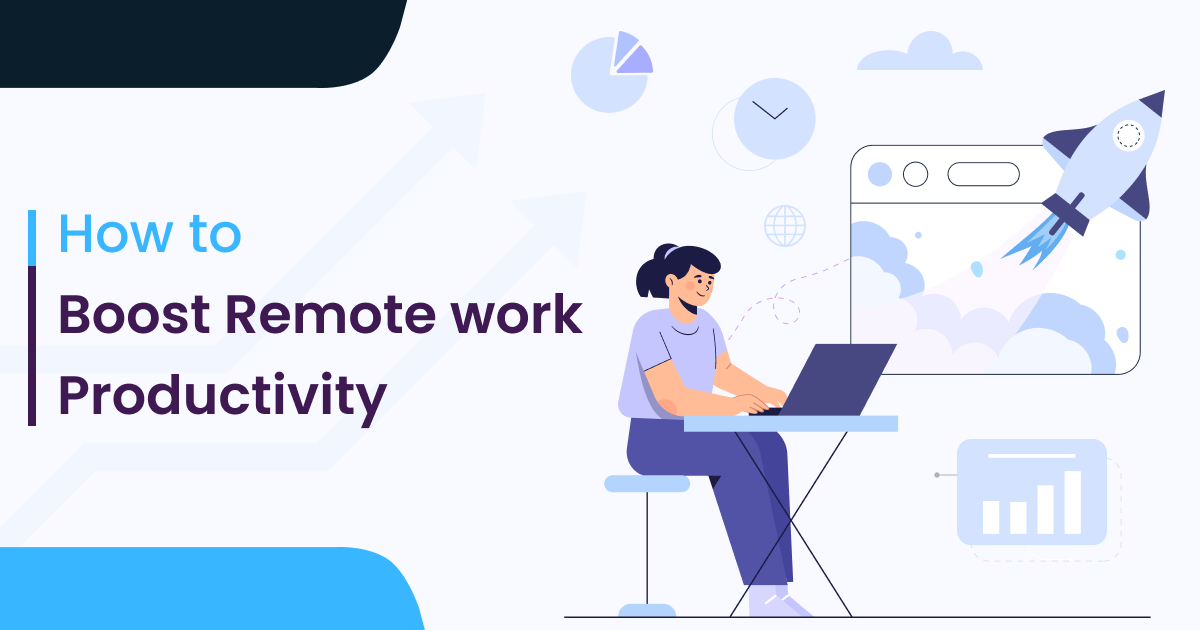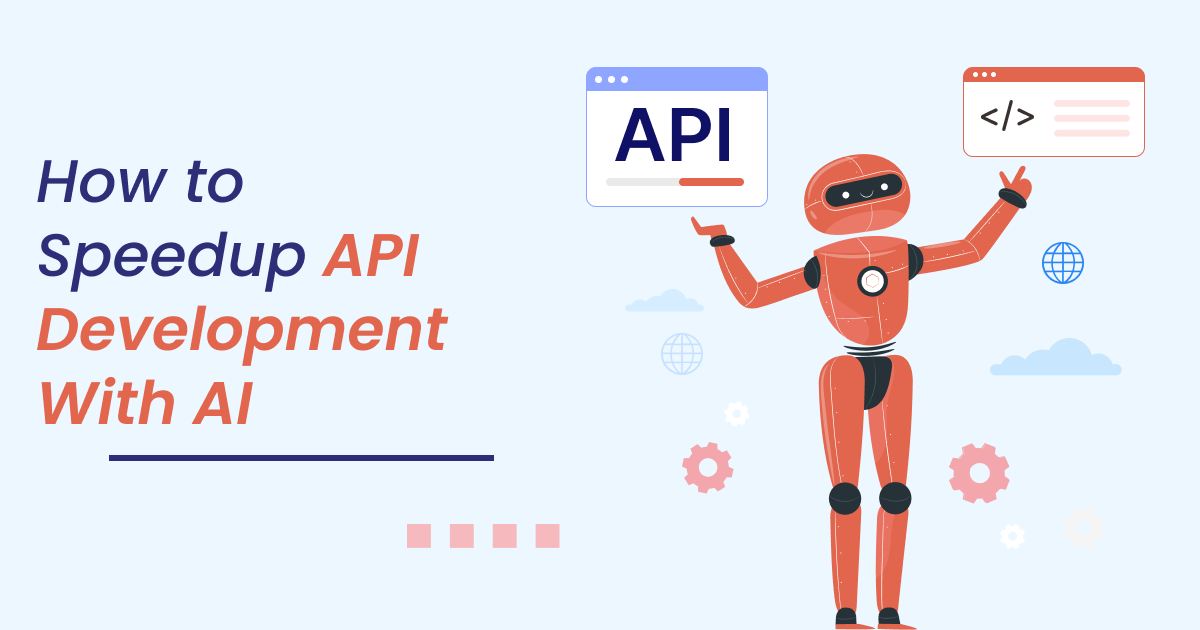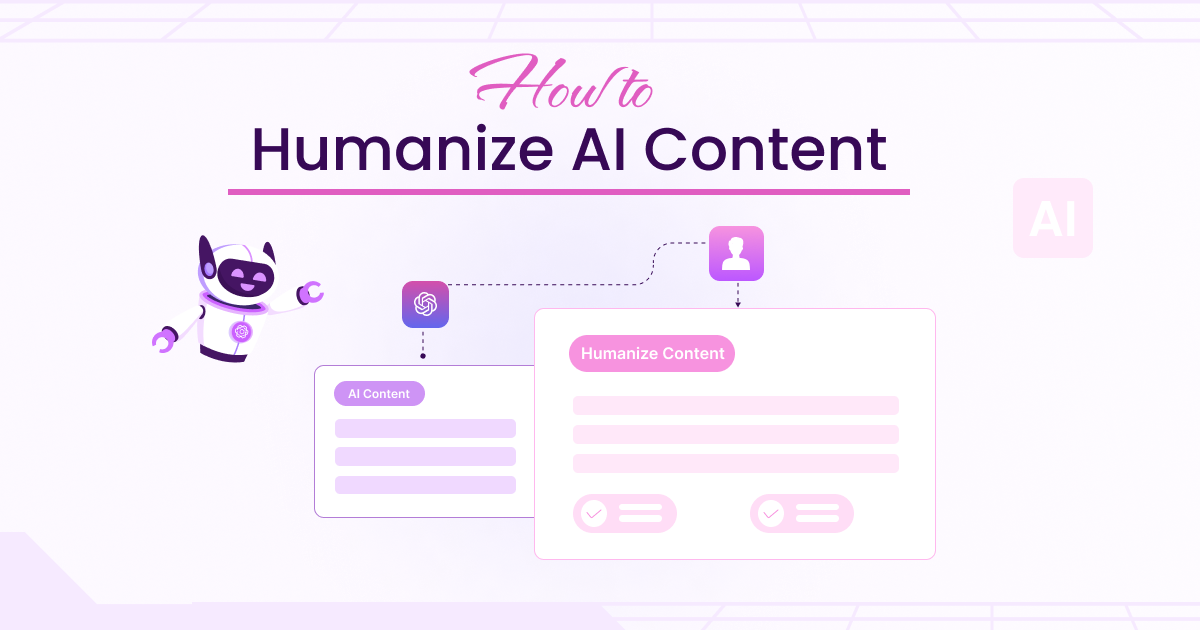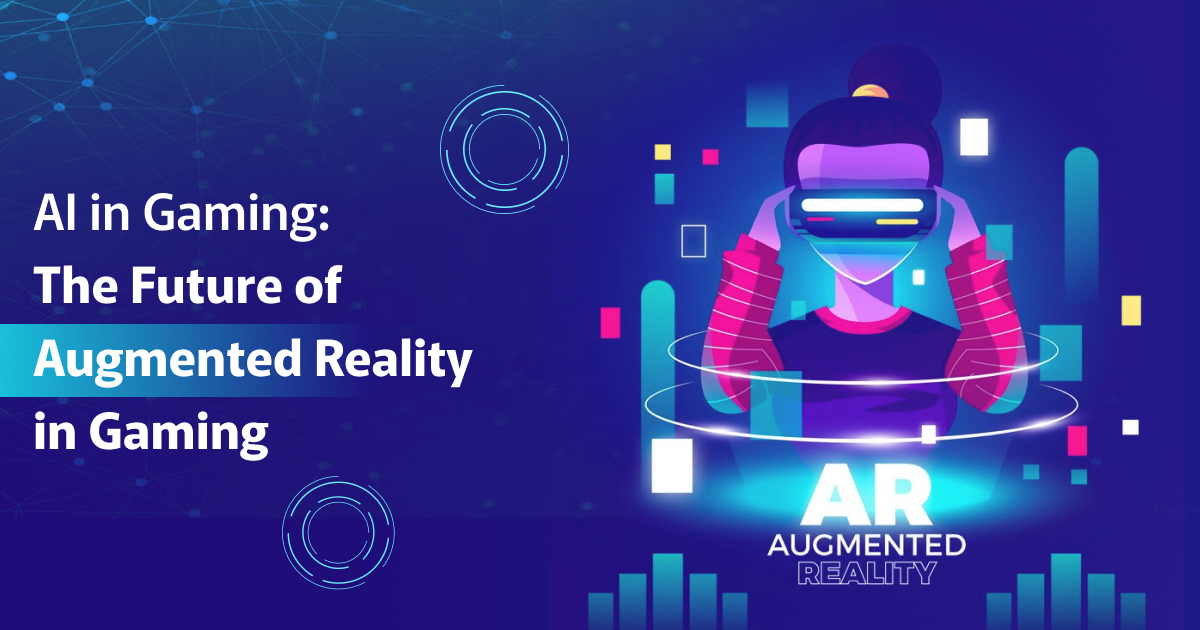Artificial intelligence, once considered a science fiction concept, is now commonplace in practically every facet of business. Generative AI, a subset of this AI, is designed to create new content, such as text, images, and videos. With Generative AI, professionals can automate work, enhance creativity, etc.
Looking ahead to 2025, it’s an exciting time for Generative AI. One of the main reasons for this excitement is the fact that we are seeing rapid AI adoption. Generative AI has shifted from being an exciting technology for forward-looking companies to BEING a necessity. The adoption of Generative AI will allow companies to become increasingly competitive.
With that said, let’s take a look into a crystal ball and see what 2025 holds for Generative AI.
Current State of Generative AI
Generative AI has improved because of advancements in deep learning, natural language processing (NLP), and multimodal AI. Important developments include the following:
- Multimodal AI models understand and generate text, images, sounds, and video at the same time.
- Ethical AI developments in terms of transparency, fairness, and alignment with regulatory frameworks.
- AI-powered automation across all sectors allows for more efficiency with less human intervention and improved accuracy.
- Improved collaboration between AI and humans where AI complements human creativity and operates as an intelligent assistant.
The rise of AI-driven careers has also led to a surge in demand for specialized learning, making courses like a prompt engineering course crucial for those looking to refine their AI expertise.
Emerging Trends in Generative AI in 2025
AI-Powered Hyper-Personalization in Marketing and E-Commerce
Artificial intelligence-enabled hyper-personalization has gained a foothold in marketing and e-commerce, allowing businesses to provide personalized interactions that take place in real time. With AI algorithms scanning the data, behaviors, and preferences of users in today’s connected world, businesses are using the intelligence to inform recommendations, advertising, and email marketing campaigns to individuals.
- AI chatbots and virtual shopping assistants are AI-powered, customer interaction touchpoints, and increases in customer engagement have evolved into fashion e-commerce businesses introducing virtual try-ons to customers. Consumers can buy online without concern about whether the size they purchased happens to fit correctly when it arrives.
- The use of AI-generated video advertising and personalized content aimed at improving conversion rates continues to proliferate in marketing campaigns. Everyone particularly enjoys personalization, not just the businesses that convert customers in sales or associations. Personalization and the ability to engage the consumer in this fashion make the customer feel valued by the business, which leads to increased customer loyalty and conversions.
- Predictive analytics allow brands to anticipate customers’ needs, while also optimizing inventory. When businesses can anticipate demand perfectly, they can ensure that they avoid risks associated with both over-inventory and under-inventory, while appropriately managing available cash.
Revolutionizing Content Creation and Media
Content creation has reached new heights with generative AI. AI-generated videos, music, blogs, and even full-fledged movie scripts are becoming mainstream.
- AI tools like OpenAI’s DALL·E 4 and DeepMind’s generative video models automate content generation.
- AI-driven journalism creates real-time news reports and summaries.
- Generative AI enables realistic synthetic actors for movies and advertisements.
Content creation automation allows marketers and content creators to focus on other relevant and much more critical tasks while AI handles mundane and repetitive tasks.
Generative AI in Healthcare and Drug Discovery
Innovations in healthcare are groundbreaking, such as using AI to assist with diagnosis and for drug discovery.
- AI generated techniques can analyze complex medical data and generate solutions more rapidly than traditional methods. AI-assisted medical imaging improves diagnostic accuracy – The analysis process is devoid of human errors, leading to accuracy and thereby optimizing healthcare.
- Personalized medicine is the practice of tailoring treatments based on one’s genetic profiling. All patients are different, and when you consider genetics, all patients are certainly even more different from one another. This means that all patients may have different outcomes and side effects of a treatment based on their genetic make-up. This is where personalized medication can impact health outcomes for individual patients by improving them.
- Using AI to generate new molecules will expedite drug discovery and speed in clinical trials.
AI-Driven Software Development and Automation
Generative AI is simplifying software development by automating processes such as coding, testing, and debugging. The application of AI-generated code equals an increase in development speed and efficiency. Generative AI has the ability to code and implement most of the development cycle.
- The only tasks required by AI developers are verifying the application, reworking anything that requires additional work, and addressing development processes that cannot be completed by a generative AI application.
- Platforms that allow for low-code or no-code application development remove barriers for non-developers to begin building applications. The ability to build applications is now available to even non-developers with the use of generative AI.
- Debugging tools powered by AI technology will reduce the risk of software errors and help ensure each parameter is obeyed. Greater compliance will ultimately increase a system’s overall security.
Generative AI in Education and Workforce Training
AI-powered education tools are reshaping learning experiences, making education more accessible and personalized.
- AI tutors provide personalized learning paths for students. Every student is different, and so are their learning styles. Based on these learning styles, Generative AI tools can create personalized learning materials and methods.
- Virtual AI instructors assist in corporate training programs. This helps businesses to cut their training costs and resources.
- AI-generated simulations offer real-world training experiences. Thus, without real-life situations, professionals get real-world experiences.
Professionals are upskilling through specialized courses like a generative AI course to stay competitive in the AI-driven job market.
AI-Powered Business Operations and Decision-Making
Businesses are leveraging AI to optimize operations, predict market trends, and enhance decision-making.
- AI-driven financial forecasting improves investment strategies and helps professionals reduce finance risks.
- AI in HR automates recruitment, performance analysis, and talent management. With the help of Generative AI tools, HR professionals can analyze a plethora of resumes and, using keywords, identify the most relevant candidates. They can also screen candidates for the final round.
- AI-powered supply chain management ensures better logistics and inventory control. Businesses can rely on these systems, as the calculations and analysis are free from human error and, thus, are more accurate.
Future of Generative AI Beyond 2025
The future of AI beyond 2025 promises groundbreaking advancements that will further redefine industries, reshape human-machine interactions, and unlock new levels of creativity and efficiency. As AI models continue to evolve, they will become more autonomous, explainable, and seamlessly integrated into everyday applications. Here are some key areas where generative AI is expected to have a transformative impact:
- More intuitive AI-human collaboration models.
- Ethical AI frameworks ensuring transparency and accountability.
- Advanced AI models are capable of reasoning and problem-solving.
So, it is right to say that, be it in any profession, individuals need to upskill in AI. There are certain AI tools that every professional must know, like Google Assistant, Alexa, Elsa Speak, and Data Bot, for better research and automation.
Conclusion
The year 2025 marks a turning point in the adoption and advancement of generative AI. With industries leveraging AI for hyper-personalization, automation, and decision-making, businesses must adapt to these trends to stay competitive. As the demand for AI expertise grows, professionals should consider enrolling in a generative AI course or a prompt engineering course to stay ahead of the curve. The future belongs to those who embrace AI’s potential while ensuring its responsible and ethical use.

